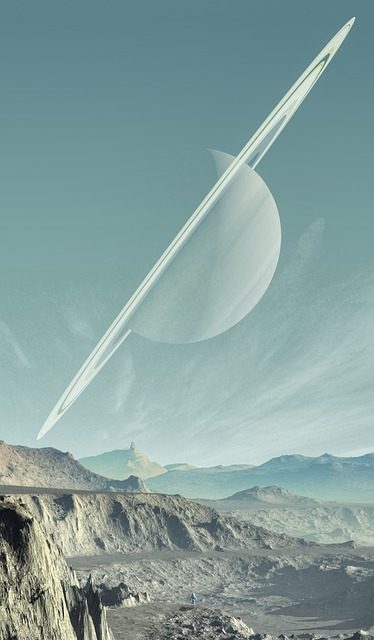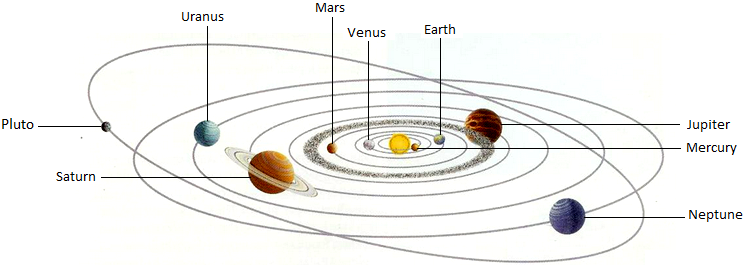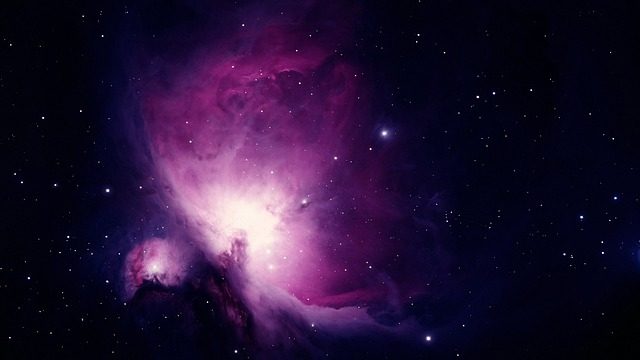Space Physics Day

Areas of Study:
Section One – Glossary
Section Two – Our Solar System
- objects of orbit
- paths of orbit
- relative size
Section Three – Gravity Force
- mass x gravitational field strength (g)
- Earth g=10 N/kg, different on other planets and stars
- gravity forces between Earth and Moon
- gravity forces between Earth and Sun (qualitative only)
Section Four – Our Sun as a Star
- other stars in our galaxy
- other stars in other galaxies
Section Five – The seasons and the Earth’s tilt
- Rotation and Revolution
Section Six – The light year as a unit of astronomical distance
Section Seven – Wrap Up!
- Organize project.
- Assessment Grid.
- Quiz.
Objectives:
- Describe the planetary bodies that comprise our solar system and name the planets of our solar system in the correct order from the sun.
- Calculate gravity force for the planets in our solar system.
- Identify and describe a star by its features.
- Describe the effect of the Earth’s tilt on the seasons.
- Demonstrate an understanding of the measurement of light years.
Section One: Glossary
- Asteroid
- Atmosphere
- Comet
- Constellation
- Corona
- Cosmos
- Dwarf planet
- Exoplanet
- Galaxy
- Gravity
- Kuiper Belt
- Light year
- Mass
- Meteor
- Meteoroid
- Moon
- Nebula
- Neutron star
- Oort Cloud
- Orbit
- Ozone layer
- Planet
- Pulsar
- Revolution
- Rotation
- Quasar
- Satellite
- Solar flare
- Solar system
- Solar wind
- Speed of Light
- Star
- Sun
- Supernova
- Universe
- Vacuum
Activity:
Create a glossary of definitions. Be creative in how you present it. It could be a table or a poster or a booklet or flashcards. Up to you.
Use as many of the suggested words as you use during the project and feel free to add new ones.
Your glossary should be in alphabetical order.
Section Two: Our Solar System
- The solar system is made up of the Sun (our nearest star) and the objects that orbit around it, including planets, asteroids and comets.
- Planets orbit the Sun in roughly circular paths, and moons orbit around planets.
- Asteroids and comets move in paths which are more oval in shape.
- The Sun’s gravity holds all of these objects together, and the gravitational forces between objects can cause less massive objects to orbit more massive objects.
(from: https://www.bbc.co.uk/bitesize/topics/z8c9q6f/articles/zxyw7yc)
Objects of Orbit
- eight planets
- many moons
- five dwarf planets
- asteroids
- comets
- gas
- dust
Paths of Orbit
- Sun’s enormous mass creates a strong gravitational field around it
- Planets, asteroids and comets orbit around it in elliptical paths
- Planets orbit in roughly circular paths
- Asteroids and comets follow paths which are elliptical in shape.

Relative Size
If Earth was the size of a cherry tomato then:
- Mercury would be a pea
- Venus would be a grape
- Mars would be a blueberry
- Jupitar would be a watermelon
- Saturn would be a grapefruit
- Uranus would be an apple
- Neptune would be a lime

Activity:
We are going to use a piece of string to measure out the distances between the planets and consider their relative sizes (not mass). This should be done with a learning partner.
You will need:
- Some fine string or twine that is about 400 feet long.
- Ten pieces of bright ribbon – each about 4 to 6 inches long. You can use all different colors if you want. Each piece will represent
- Outside space. A lot of it. The best idea would be a park or large field.
On this page you can calculate the relative sizes of the planets. Try out a bunch of different sizes for yourself, but I suggest you settle on making the Sun 1 inch (or 25 millimeters in diameter.
Make a note of the measurements if the Sun is one inch in diameter. Create a table with these three headings: If you have decided to color code the ribbons, add another column to identify which is which.
Planet Name
Body Diameter (inches or millimeters – you choose – this is the size of the planet)
Scaled Orbit Radius (feet & inches – this will be easier to calculate – this is the distance between the planet and the sun)
You can either tie one end of the string around a post or have someone hold it. This is the sun. (According to the suggested scale of the Sun being one inch) walk three feet and tie a ribbon onto the string to represent Mercury. Continue until you run out of string or space.
You can have someone take photos or a video if you wish to record this and add it to your project.
Section Three: Gravity Force
Gravity is the force by which a planet or other body draws objects toward its center. The force of gravity keeps all of the planets in orbit around the sun.
Why do you land on the ground when you jump up instead of floating off into space? Why do things fall down when you throw them or drop them? The answer is gravity: an invisible force that pulls objects toward each other. Earth’s gravity is what keeps you on the ground and what makes things fall.

Image credit: NASA
Albert Einstein described gravity as a curve in space that wraps around an object—such as a star or a planet. If another object is nearby, it is pulled into the curve.
Anything that has mass also has gravity. Objects with more mass have more gravity. Gravity also gets weaker with distance. So, the closer objects are to each other, the stronger their gravitational pull is.
Earth’s gravity comes from all its mass. All its mass makes a combined gravitational pull on all the mass in your body. That’s what gives you weight. And if you were on a planet with less mass than Earth, you would weigh less than you do here.
(from: https://spaceplace.nasa.gov/what-is-gravity/en/)
Gravity Force
Gravitational force definition
Newton’s law of universal gravitation states that every body of non-zero mass attracts every other object in the universe. This attractive force is called gravity. It exists between all objects, even though it may seem ridiculous. For example, while you read these words, a tiny force arises between you and the computer screen. This force is too small to cause any visible effect, but if you apply the principle of gravitational force to planets or stars, its effects will begin to show.
(from: https://www.omnicalculator.com/physics/gravitational-force)
Gravity Force Between Earth and Moon
We can calculate gravity force between two planets by using the following formula: F = GMm/R²
- F — Gravitational force, measured in newtons (N). It is always a positive number.
- M and m — Masses of two objects in question, in kilograms (kg);
- R — Distance between the centers of these two objects, in meters (m);
- G — Gravitational constant. It is equal to 6.674×10⁻¹¹ N·m²/kg². It doesn’t change.
Use the calculator on this page to calculate the gravity force between the Earth and the Moon.
- Earth’s mass is 5.972×10²⁴ kg. Type this into your calculator like this: 5.972 x 10 yx 24. You will get the number 5.971999999999999e24. Round that to 5.972e24
- Moon’s mass is 7.342×1022 kg. Use your calculator to come up with 7.342000000000001e22 which rounds to 7.342e22
- The distance from the Earth to the Moon is 382500 km
- Plug these into the gravity force calculator.
- You should get 200021658475423982229. Use this calculator to simplify that number to 2.00022E20, which can be rounded to 2e20 Newtons or 2 × 1020 N and we can check that answer in many places including here.
Activity:
Calculate the Gravity Force Between Earth and Sun
Carry out the same process to find the gravity force between the earth and the sun. Here are your starting numbers:
Earth’s mass: 5.972×10²⁴ kg
Sun’s mass: 1.989×10³⁰ kg
Distance from Earth to Sun: 149,600,000 km
Check your answer here.
Section Four: Our Sun as a Star
“If you want to see a black hole tonight, just look in the direction of Sagittarius, the constellation. That’s the center of the Milky Way Galaxy and there’s a raging black hole at the very center of that constellation that holds the galaxy together.”
— Michio Kaku
What is OUR Sun?
Our Sun is a 4.5 billion-year-old star – a hot glowing ball of hydrogen and helium at the center of our solar system. The Sun is about 93 million miles (150 million kilometers) from Earth, and without its energy, life as we know it could not exist here on our home planet.
The Sun is the largest object in our solar system. The Sun’s volume would need 1.3 million Earths to fill it. Its gravity holds the solar system together, keeping everything from the biggest planets to the smallest bits of debris in orbit around it. The hottest part of the Sun is its core, where temperatures top 27 million degrees Fahrenheit (15 million degrees Celsius). The Sun’s activity, from its powerful eruptions to the steady stream of charged particles it sends out, influences the nature of space throughout the solar system.
(from: https://solarsystem.nasa.gov/solar-system/sun/overview/)
What is a Sun?
- Our Sun is an ordinary star, just one among hundreds of billions of stars in the Milky Way Galaxy.
- Our Sun is sometimes referred to as a “typical” or “average” star, but stars that are closely similar to the Sun constitute only about 5% of the stars in our galaxy.
- As the only star we can observe in detail, it provides a basis for our understanding of all stars.
- The Sun is composed almost entirely of hydrogen and helium gas.
- Multimillion-degree temperatures provide the energy source for sunlight.
- The surface of the Sun is marked by colossal magnetic storms.
- The Sun’s gravity holds in orbit a family of planets, moons, asteroids, and comets – the solar system.
Other Stars in Our Galaxy
Our galaxy is the Milky Way. The Milky Way gets its name from a Greek myth about the goddess Hera who sprayed milk across the sky. In other parts of the world, our galaxy goes by other names. In China it’s called the “Silver River,” and in the Kalahari Desert in Southern Africa, it’s called the “Backbone of Night.”
Our Sun is one of at least 100 billion stars in the Milky Way, a spiral galaxy about 100,000 light-years across.
The stars are arranged in a pinwheel pattern with four major arms, and we live in one of them, about two-thirds of the way outward from the center. Most of the stars in our galaxy are thought to host their own families of planets.
Other Stars in Other Galaxies
Are there any stars outside our own galaxy that we can see with just the eye?
The answer is no – unless you count seeing the combined light of many billions of stars.
From the Northern Hemisphere, we can see the combined light of the stars of the great galaxy in the constellation Andromeda.
From the Southern Hemisphere, it’s possible to see the combined lights of the stars of two dwarf galaxies, the Large and Small Magellanic Clouds.
Section Five: The Seasons and the Earth’s Tilt
Earth’s tilted axis causes the seasons. Throughout the year, different parts of Earth receive the Sun’s most direct rays. So, when the North Pole tilts toward the Sun, it’s summer in the Northern Hemisphere. And when the South Pole tilts toward the Sun, it’s winter in the Northern Hemisphere.
More info here.
(from: https://spaceplace.nasa.gov/seasons/en/)
What is Rotation?
A rotation is a circular movement of an object around a centre of rotation. If three-dimensional objects like the earth, moon and other planets always rotate around an imaginary line, it is called a rotation axis. If the axis passes through the body’s centre of mass, the body is said to rotate upon itself or spin.
What is Revolution?
Revolution is often used as a synonym for rotation. However, in many fields like astronomy and its related subjects, revolution is referred to as an orbital revolution. It is used when one body moves around another, while rotation means moving around the axis. For example, the Moon revolves around the Earth, and the Earth revolves around the Sun.
Activity:
The following statements refer to either the earth’s rotation or its revolution.
Create a diagram or model that demonstrates the rotation of the Earths around its access and the revolution of the Earth around the sun. You could even physically demonstrate it and take photos. Here are some examples.
Use some of these statements to label the diagram. Some of them refer to rotation and some refer to revolution.
- The Earth turning on its axis
- Takes 24 hours for the Earth to complete.
- The movement of the Earth around the Sun.
- The Earth takes a full year (365 days) to complete.
- An elliptical path.
- An orbit.
- It tilts at 23.5 degrees.
- It occurs when one celestial body moves around another.
- It creates the diurnal cycle of lightness and darkness
- It causes temperature and humidity changes.
- It creates tides in the oceans and seas.
- It causes seasons.
- The duration of days and nights are the same at the equator.
- The duration of days and nights vary in the Northern and Southern hemispheres.
Section Six: The Light Year as a Unit of Astronomical Distance
What is a Light Year?
A light-year is a large unit of length used to express astronomical distances.
It is equivalent to about 5.88 trillion miles.
A light-year is the distance that light travels in a vacuum in one Julian year (365.25 days).
It is a unit of distance rather than time.
The light-year is most often used when expressing distances to stars .
Professional astronomists more commonly use the parsec.
Activity:
Because light travels so very fast, everything appears to happen instantly in our everyday experience.
Stars are millions and millions of kilometers away. To see a star, that star’s light must travel across space to our eyes.
If the star is 5 light years away, then the light we are seeing from that star took five years to travel to our eyes.
It also means that what we see happening at that star is actually what happened five years ago, not what is happening in the star’s present.
Section Seven: Wrap Up!
Super Space Physics Quiz!

